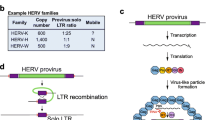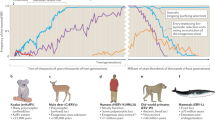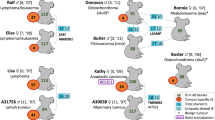Abstract.
The genomes of vertebrates contain sequences that are similar to present-day exogenous retroviruses. Such sequences, called endogenous retroviruses (ERVs), have resulted from ancestral germ line infections by exogenous retroviruses which have thereafter been transmitted in a Mendelian fashion. By analogy to exogenous tumorigenic retroviruses, ERVs have been implicated in the pathogenesis of cancer. Cumulative evidence from animal models indicates that ERVs may participate in the process of malignant transformation or promote tumor growth, e.g. through insertional mutagenesis or via counteracting tumor immunosurveillance. Here, we review the role of ERVs in tumorigenesis with focus on human ERVs (HERVs) in human cancer. Although available data suggest a potential role of HERVs in human cancers, in particular germ cell tumors, the contributions of HERVs to human tumorigenesis warrant further elucidation. (Part of a Multi-author Review)
Similar content being viewed by others
Author information
Authors and Affiliations
Corresponding author
Rights and permissions
About this article
Cite this article
Ruprecht, K., Mayer, J., Sauter, M. et al. Endogenous retroviruses. Cell. Mol. Life Sci. 65, 3366–3382 (2008). https://doi.org/10.1007/s00018-008-8496-1
Published:
Issue Date:
DOI: https://doi.org/10.1007/s00018-008-8496-1




